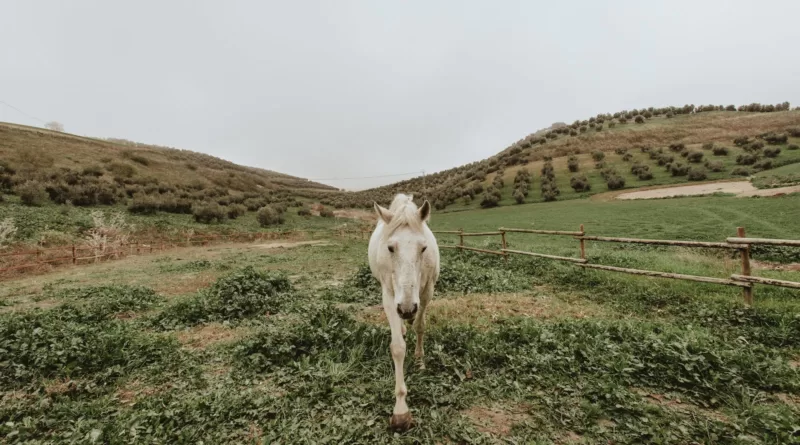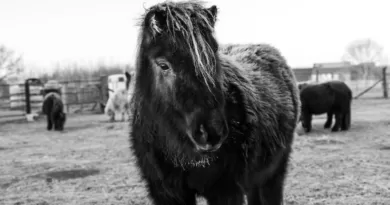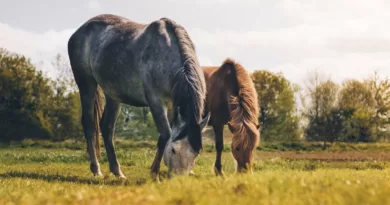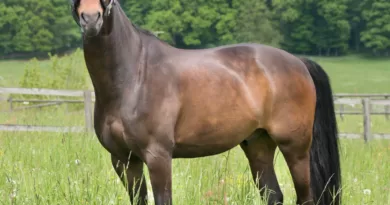How to Train a Dressage Horse
Understanding the Basics of Dressage Training
Dressage training is a discipline that is based on the principles of harmony, balance, and communication between horse and rider. It requires precision, finesse, and a deep understanding of the horse’s natural movement. At its core, dressage is about developing a partnership with your horse and refining their physical and mental abilities.
One of the fundamental aspects of dressage training is creating a strong foundation through trust and effective communication. This involves establishing a bond of mutual respect and understanding between the horse and the rider. A horse that trust its rider is willing to perform to the best of its ability and is more likely to respond to the rider’s aids. Likewise, a rider that communicates effectively with their horse can give clear and concise instructions, leading to a harmonious and synchronized performance. Building this foundation is crucial for the success of any dressage journey.
Developing a Strong Foundation: Building Trust and Communication with Your Horse
Developing a strong foundation in dressage training begins with building trust and establishing clear communication with your horse. Trust is the key component that forms the bond between you and your equine partner. It is essential to earn the trust of your horse by demonstrating consistency, patience, and kindness in your training approach.
Effective communication is equally important in establishing a solid foundation. Horses are highly perceptive animals and rely on a combination of verbal cues, body language, and subtle aids from their riders. Understanding your horse’s body language and being able to communicate your intentions clearly will help foster a deeper connection and eliminate any confusion during training sessions. Building trust and improving communication with your horse takes time and effort, but it is the solid foundation upon which all future dressage training will be built.
Selecting the Right Equipment and Tack for Dressage Training
When it comes to dressage training, selecting the right equipment and tack is crucial for both the comfort and effectiveness of both horse and rider. The most essential piece of tack for dressage is the dressage saddle. These saddles are specifically designed to allow the rider’s seat and aids to be clear and effective, while also providing maximum freedom of movement for the horse. It is important to choose a saddle that fits both the rider and the horse properly, as an ill-fitting saddle can cause discomfort and hinder performance.
In addition to a well-fitting dressage saddle, selecting the right bridle is equally important. Dressage bridles typically feature a snaffle bit and a double bridle can be used at the higher levels of dressage. The bit should be chosen to match the horse’s individual needs and level of training, as it plays a significant role in communication between horse and rider. Girths, stirrup leathers, and stirrup irons should all be selected with care, ensuring that they are safe and of appropriate quality. Overall, the right equipment and tack can enhance the training process and contribute to the success and harmony between horse and rider in dressage.
Establishing Proper Groundwork and Establishing Respect
Establishing proper groundwork and establishing respect form the foundation of a successful dressage training experience. Before delving into the intricacies of advanced movements and exercises, it is crucial to establish a solid groundwork with your horse. This involves developing a clear and consistent communication system, as well as building trust and mutual respect.
Communication is the key to any successful relationship, including the one between a rider and their horse. Through proper groundwork, you can establish a common language that allows you to effectively convey your cues and aids to your equine partner. This involves mastering the art of body language, learning to read your horse’s subtle movements, and responding appropriately. With time and practice, these communication skills will become second nature, creating a harmonious partnership that is essential for progress in dressage training.
In addition to communication, establishing respect is another crucial aspect of groundwork. Respect must be earned and maintained between a rider and their horse. It is not about dominance or submission, but rather about mutual understanding and trust. By fostering a relationship built on respect, you can create an environment in which your horse willingly gives their full effort and willingly cooperates with your requests. Without this foundation of trust and respect, it becomes difficult to achieve the level of partnership and connection required for successful dressage training.
Developing Suppleness and Flexibility through Correct Warm-up Exercises
Proper warm-up exercises are essential for developing suppleness and flexibility in your dressage horse. These exercises help to loosen up the muscles, increase blood flow, and prepare the horse for the more challenging movements ahead.
One effective warm-up exercise is the leg yield. This exercise involves asking the horse to move sideways while maintaining a forward momentum. It helps to loosen up the horse’s ribs, shoulders, and hindquarters, promoting flexibility and suppleness throughout the body. Starting with a few steps of leg yield in each direction can help your horse become more responsive to your aids and more willing to engage his body in the following exercises.
Another beneficial warm-up exercise is the shoulder-in. This movement is performed by asking the horse to bring his inside shoulder slightly towards the centerline while maintaining a forward rhythm. The shoulder-in stretches the horse’s inside ribcage and hind leg, promoting suppleness and engagement. Incorporating shoulder-in into the warm-up routine helps the horse to develop better balance, coordination, and flexibility, setting a solid foundation for the rest of the training session.
Mastering the Essential Dressage Movements: Walk, Trot, and Canter
The key to mastering the essential dressage movements of walk, trot, and canter lies in developing a harmonious partnership with your horse. These gaits form the foundation of dressage training and are essential for building strength, balance, and suppleness in both horse and rider.
In the walk, the horse’s four hooves move separately and create a four-beat rhythm. It is important to maintain a relaxed yet engaged walk, with the horse stepping forward with purpose and taking even strides. The rider should sit deep in the saddle, allowing the horse to swing through their back while maintaining light contact on the reins.
Moving on to the trot, this two-beat gait is characterized by diagonal pairs of legs moving together. It is essential to develop a balanced and rhythmic trot, with the horse responding to subtle shifts in the rider’s weight and aids. The rider’s position should be upright, allowing the horse to move freely and actively. Maintaining impulsion and engagement in the trot is crucial for the horse to produce the desired elevated and rhythmic steps.
Lastly, we have the canter, a three-beat gait that showcases the horse’s natural athleticism. The canter consists of a sequence of suspension, diagonal support, and propulsion. The rider must maintain a quiet and balanced seat while encouraging the horse to carry their weight on their hindquarters. Through correct use of the aids, the rider can influence the horse’s rhythm, speed, and balance in the canter.
Mastering the essential dressage movements of walk, trot, and canter requires patience, practice, and a deep understanding of the horse’s biomechanics. Only through consistent and correct training can the rider and the horse achieve the level of connection and harmony necessary to progress in dressage.
Advancing to Higher Levels: Introducing Collection and Extension
Collection and extension are advanced concepts in dressage training that require a solid foundation and a horse with basic knowledge of the essential dressage movements. Introducing collection involves teaching the horse to engage his hindquarters and lift his back, resulting in improved balance and self-carriage. This is achieved through the rider’s proper use of aids and the horse’s correct response to them. Collection allows the horse to flex his joints, lower his haunches, and bring his hind legs further underneath his body, enhancing his ability to perform more advanced movements with elegance and precision.
On the other hand, extension involves the horse covering more ground with longer strides while maintaining a steady rhythm and balance. It requires the horse to push off from his hindquarters and reach forward with his front legs, showcasing his athleticism and suppleness. The rider plays a crucial role in encouraging the horse to stretch his frame and open up his stride while maintaining the connection and impulsion established through collection. With consistent practice and gradual progression, the horse can develop the strength and confidence needed to perform powerful and expressive extensions, adding depth and variety to his repertoire of movements.
Perfecting Transitions: Achieving Smooth and Seamless Movements
Smooth and seamless transitions are crucial for a successful dressage performance. These transitions occur when a horse smoothly changes from one gait or movement to another without any abruptness or hesitation. Achieving smooth transitions requires precise aids from the rider, as well as the horse’s understanding and responsiveness.
To achieve smooth transitions, it is essential for the rider to have a deep understanding of the aids and timing. Clear and consistent communication through the seat, legs, and hands is vital in guiding the horse through the transition. The rider must ensure that the aids are applied in a timely manner, with the ideal pressure and release of each aid. Consistency in the application of aids helps the horse to anticipate and respond accordingly, resulting in a harmonious and effortless transition. Additionally, the rider must maintain proper balance and posture, allowing the horse to move freely and without any restriction. By focusing on the art of timing, communication, and balance, riders can perfect their transitions and achieve smooth and seamless movements.
Enhancing Precision and Accuracy: Working on Straightness and Bend
Achieving precision and accuracy is a fundamental aspect of dressage training, as it showcases the harmony between horse and rider. Working on straightness and bend is essential to develop the required level of control and alignment in your horse’s movements. Straightness refers to the horse’s ability to stay on a straight line, while bend involves the suppleness and flexibility of the horse’s body.
To enhance straightness, it is crucial to maintain an even contact on both reins, allowing for equal distribution of weight and balance. This helps the horse maintain a straight line without drifting to one side. Straightness can be improved through exercises like leg-yielding, which encourages the horse to move away from the rider’s leg aids and helps in straightening the body.
On the other hand, bend focuses on the lateral suppleness and flexibility of the horse. Proper bend is necessary for executing circles, turns, and lateral movements smoothly. This can be achieved by applying a slight inside rein aid to encourage the horse to flex in the direction of the bend, while the outside rein maintains a supportive contact. Exercises like serpentines and shoulder-in can aid in developing bend and suppleness in your horse.
By placing emphasis on straightness and bend, you can enhance the precision and accuracy of your dressage horse’s movements, leading to a more polished performance and a stronger connection between horse and rider.
Fine-tuning Your Dressage Horse: Polishing Performance and Achieving Harmony
Fine-tuning your dressage horse is the pinnacle of your training journey. At this stage, you focus on refining every aspect of your horse’s performance, striving for perfection and achieving a harmonious partnership. This is the stage where the subtlest of aids and movements have the most significant impact, as you work towards creating a seamless connection with your horse.
To polish your horse’s performance and achieve harmony, attention to detail becomes paramount. You must concentrate on perfecting every movement, ensuring correct alignment and balance. Precision and accuracy are key elements in this stage, as you strive to achieve fluidity and elegance. Through consistent training and practice, you can fine-tune your horse’s responsiveness to your aids, creating a partnership based on trust, communication, and mutual understanding. Ultimately, your goal is to seamlessly merge your aids and your horse’s natural movements, showcasing the beauty and grace that dressage is renowned for.
What is dressage training?
Dressage training is a method of developing a horse’s natural athleticism and obedience through a series of carefully structured exercises and movements.
Why is building trust and communication important in dressage training?
Building trust and communication with your horse is crucial in dressage training because it establishes a strong foundation and allows for a harmonious partnership between horse and rider.
How do I select the right equipment and tack for dressage training?
When selecting equipment and tack for dressage training, it is important to choose items that are comfortable and appropriate for your horse’s conformation and level of training. Consult with an experienced trainer or professional to ensure you have the correct equipment.
What is groundwork and why is it important in dressage training?
Groundwork refers to exercises done with the horse on the ground, such as lunging and long-lining. It is important in dressage training because it establishes respect, obedience, and responsiveness from the horse.
How can I develop suppleness and flexibility in my dressage horse?
Suppleness and flexibility can be developed through correct warm-up exercises that focus on stretching and loosening the horse’s muscles. This can include exercises such as circles, serpentines, and leg-yields.
What are the essential dressage movements?
The essential dressage movements include the walk, trot, and canter. These movements are the foundation of dressage training and are further developed as the horse progresses.
How do I introduce collection and extension in dressage training?
Collection and extension are introduced in dressage training as the horse advances. Collection involves shortening and raising the horse’s frame, while extension involves lengthening and stretching the horse’s stride.
How can I achieve smooth and seamless transitions in dressage?
Smooth and seamless transitions can be achieved through clear and precise aids, consistent timing, and practicing transitions between gaits and within gaits during your training sessions.
What is the importance of straightness and bend in dressage training?
Straightness and bend are important in dressage training as they contribute to the horse’s balance, suppleness, and ability to perform movements correctly. Straightness refers to the horse’s body alignment, while bend refers to the horse’s ability to flex through its body.
How can I polish my dressage horse’s performance and achieve harmony?
To polish your dressage horse’s performance and achieve harmony, it is important to fine-tune your training by focusing on refining and perfecting the movements, improving precision and accuracy, and maintaining a consistent and balanced partnership with your horse.




